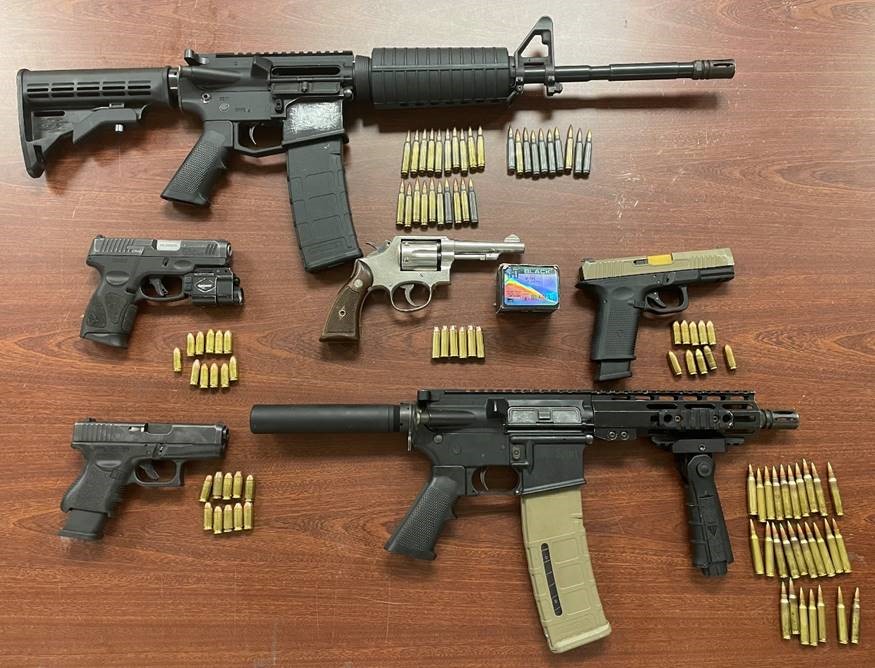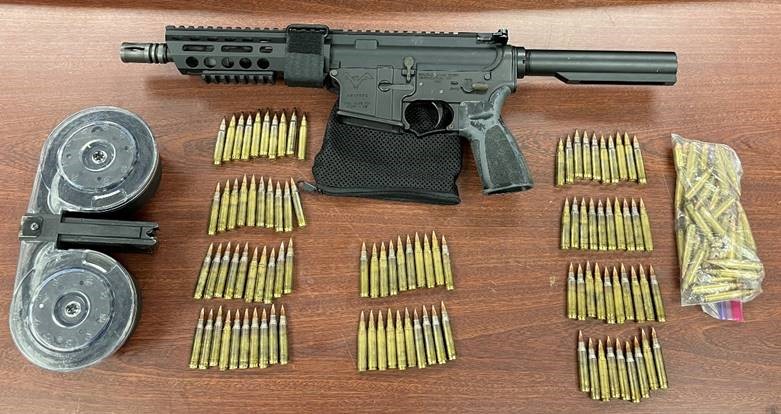Mayor Adams Hosts Community Conversation in Morris Park
By Robert Press
Commissioner Fred Kreizman of the Mayor's Community Affairs Unit opened the meeting by introducing himself and thanking the High School for Visual Arts Principal Dr. Iris Weitherspoon for the use of the school. He then mentioned that staff from the mayor's office were at each table for the past hour to facilitate discussion, to come to a consensus on what question to ask the mayor from each table.
The elected officials Bronx Borough President Vanessa L. Gibson, Bronx District Attorney Darcel Clark, Councilwoman Kristy Marmorato, Assemblyman John Zaccaro, and Assemblywoman Jenifer Rajkumar, along with Deputy Mayors, Commissioners or Agency heads who were present were announced, before Mayor Eric Adams was introduced. The elected officials led by Borough President Gibson spoke and then Mayor Adam took control of the meeting.
Mayor Adams then called on Dr. Mitchell Katz to tell the audience about the Just Home project at Jacobi Hospital. In Dr. Katz's words he mentioned housing projects at other city hospitals like a nurse residency in Queens and a new building in Brooklyn with Comunilife for supportive housing. (In fact checking Dr. Katz's statement Woodhull Hospital is building a ninety-three unit building on hospital property at 171 Throop Avenue as Phase Two, that will have fifty-six units of supportive housing for patients of NYC Health and Hospital who are experiencing homelessness, and they will receive services from Comunilife and health care from Woodhull Hospital. The remaining apartments comprise twenty-one affordable homes for extremely low-income seniors, fifteen affordable homes for low-income New Yorkers and one super's unit according to a HHC press release for Woodhull Hospital dated April 27, 2023. Phase One was built in 2019 with eighty-nine units of affordable and supportive housing on the WoodHull campus at 179 Throop Avenue. After the meeting I was able to ask Dr. Katz if there would be any further buildings on the Jacobi Campus, to which he refused to answer.)
Dr. Katz went on to say that for Just Home at Jacobi the City Council had given HHC one million dollars to develop a project specifically at the Jacobi campus in order to care for people coming out of Rikers Island especially people who are older and had medical problems. The land that we have is the land we have. It's not as if I could look where else this could go. I looked here because it was already on Jacobi, and we felt that this was a great synergy because these people are going to need medical care. Here they are on a campus where we can deliver medical care. This is a project very similar to the project that is in Harlem. This is not the first time New York City has had a supportive housing project for people with justice involvement who have come out of Rikers. It had been called an experiment when it was brought to the people around the Jacobi campus that had never been done before.
Mayor Adams and Dr. Katz went back and forth on items such as how many units were at the Jacobi project. Dr. Katz said he didn't know, but Commissioner Kreizman said 58 supportive units, 25 affordable units to 60 percent AMI, to which Dr. Katz said the affordable units are a nice model to mention. Then it went, Mayor Adams: So it's not 100 percent of those who are reentering. Dr. Katz: That is correct. Mayor Adams: Part of it is for affordable housing. Dr. Katz: Correct. Mayor Adams: Okay. Think about this for a moment. The hardest placement we have in the city is for single adult males. No one raised their hands and said, hey, Eric, bring them here. No one. We're required to house them. When you have a program like this where 25 of the units are affordable, 50-some of them are returning medically with medical issues, that's a balance.
The questions then started with one resident saying during a meeting at Jacobi Dr. Katz had his head down on his phone almost the entire meeting, she went on to say that the local elected officials are against the Just Home project and that her backyard is Jacobi Hospital. She added that it is not people coming out of Rikers, but pre-trial detainees, and another resident outside the Jacobi fence on Seminole Avenue continued that the community does not want people currently detained in Rikers Island placed in Jacobi Hospital free to go anywhere in the community not knowing what crimes they are accused of with only a security guard to watch as they come and go. Councilwoman Marmorato then showed a petition she said had three thousand signatures on it from residents against placing Rikers Island inmates at Jacobi Hospital. She added that there are four homeless shelters in the vicinity of Jacobi Hospital which would be the fifth in the middle of the metro north rezoning that is to bring 7,500 new units of affordable housing. Mayor Adams asked for clarification on the homeless shelters, and a representative from the Human Resources Administration said he knows of two single men's shelters with a capacity of two hundred men each. Councilwoman Marmorato said the other two were a two hundred bed facility just built on Stillwell Avenue right next to the new Morris Park station, and another on Jarret Place in the rezoning area.
Mayor Adams then went to other tables to hear other problems such as a rat problem in a residence that he asked his Rat Czar to handle after the meeting, problems of car break ins and items such as wheels and mirrors being stolen, which the new captain of the 49th precinct addressed. The old infrastructure of the area and flooding that now occurs when it rains. After the City Planning commissioner spoke about the new buildings the commissioner from the Department of Environmental Protection said that he and the councilwoman who is on the City Council Environmental Committee had just done a walkthrough of the area where the flooding has occurred. He said more catch basins are needed. To a question of illegal vendors and smoke shops on White Plains Road Captain Theanthong commanding officer of the 49th Precinct said that officers were moved to different shifts to handle other crime issues that were mentioned before, and he has asked for traffic agents to ticket double parked cars to open the street up. As for the smoke shops he said one was just closed and he is looking into the selling of cannabis on the street and how to handle it from the legal department.
Other questions were about the misnomer as Mayor Adams called it that migrants are getting what regular city residents can't get, another question was if the AMI for affordable housing which is too high for residents of the Bronx to afford, where Mayor Adams said he wants affordable housing for his city workers who can not find housing in the city. The last two questions were of a new extension to a local school that the community wants to go to the eighth grade saying there are not enough middle school seats in the area. That will have to be brought up with the superintendent who was not at the meeting, and the last question was on the gang member database the city council wants to disband, which the mayor said to write to the chair of the Public Safety committee and council members who are on that committee. The mayor stayed briefly to talk to some area residents continuing on the Just Home project until the mayor was whisked away by staff.
Mayor Adams came out from behind the table to walk among the people. In the background Dr. Mitchell Katz is on his cellphone.
Captain Theanthong, commanding officer of the 49th Precinct answers the question of crime in the precinct area.







